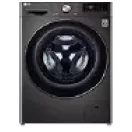The Snapdragon 4 Gen 2 vs Snapdragon 660 comparison highlights the significant advancements in mobile processor technology. The Snapdragon 4 Gen 2, built on a more advanced architecture, delivers superior performance and efficiency. It boasts improved CPU and GPU capabilities, ensuring faster processing speeds and smoother graphics performance. Additionally, the Snapdragon 4 Gen 2 features enhanced AI capabilities, which provide better support for modern applications and smart features. On the other hand, the Snapdragon 660, while still a reliable processor, is based on an older architecture and lacks the same level of efficiency and performance enhancements.
In terms of connectivity, the Snapdragon 4 Gen 2 outshines the Snapdragon 660 with its support for the latest wireless technologies, including advanced 5G capabilities. This ensures faster download and upload speeds, reduced latency, and a more stable connection overall. Moreover, the Snapdragon 4 Gen 2 offers better power management, extending battery life even during heavy usage. For those looking to upgrade their device, considering
Snapdragon 888 mobile phones or other
Snapdragon processor phones could also be beneficial, as they provide a range of options with the latest technology advancements. In summary, the Snapdragon 4 Gen 2 is a clear winner in the Snapdragon 4 Gen 2 vs Snapdragon 660 comparison, offering a more robust and future-proof solution for smartphone users.
Technical specifications Snapdragon 4 Gen 2 vs Snapdragon 660 General info
The Snapdragon 4 Gen 2 was announced on 26 June 2023, marking its entry as a mid-range processor with model number SM4450 under the Qualcomm brand. On the other hand, the Snapdragon 660, also a mid-range offering from Qualcomm, was announced on 9 May 2017 and is identified by model number SDM660.
| Category | Snapdragon 4 Gen 2 | Snapdragon 660 |
| Announced Date | 26 June 2023 | 9 May 2017 |
| Class | Mid-Range | Mid-Range |
| Model Number | SM4450 | SDM660 |
| Brand | Qualcomm | Qualcomm |
CPU
The Snapdragon 4 Gen 2 utilises ARMv8 architecture with an 8-core setup (2 Cortex-A76 and 6 Cortex-A55) running at 2.0 GHz, manufactured using a 6nm process by TSMC. It has a TDP of 6W. Conversely, the Snapdragon 660 features ARMv8 architecture as well, but with 8 Kryo 260 cores (4 Gold and 4 Silver) at 2.2 GHz, built on a 14nm process by Samsung, with a TDP of 10W.
| Category | Snapdragon 4 Gen 2 | Snapdragon 660 |
| Architecture | ARMv8 | ARMv8 |
| Cores | 8 (2x Cortex-A76, 6x Cortex-A55) | 8 (4x Kryo 260 Gold, 4x Kryo 260 Silver) |
| Frequency | 2.0 GHz | 2.2 GHz |
| Instruction set | ARMv8-A | ARMv8-A |
| Process | 6nm | 14nm |
| TDP (Sustained Power Limit) | 6W | 10W |
| Manufacturing | TSMC | Samsung |
Graphics
The Snapdragon 4 Gen 2 is equipped with the Adreno 619 GPU, which operates at 950 MHz and features 16 execution units and 192 shading units, achieving 700 GFLOPS. It supports Vulkan 1.1, OpenCL 2.0, and DirectX 12. The Snapdragon 660, with the Adreno 512 GPU, runs at 850 MHz with 8 execution units and 128 shading units, providing 400 GFLOPS, and supports Vulkan 1.0, OpenCL 2.0, and DirectX 12.
| Category | Snapdragon 4 Gen 2 | Snapdragon 660 |
| SoC | Snapdragon | Snapdragon |
| GPU name | Adreno 619 | Adreno 512 |
| Architecture | Adreno | Adreno |
| GPU frequency | 950 MHz | 850 MHz |
| Execution units | 16 | 8 |
| Shading units | 192 | 128 |
| Total shaders | 192 | 128 |
| FLOPS | 700 GFLOPS | 400 GFLOPS |
| Vulkan version | 1.1 | 1.0 |
| OpenCL version | 2.0 | 2.0 |
| DirectX version | 12 | 12 |
Memory
The Snapdragon 4 Gen 2 supports LPDDR4X memory with a frequency of 2133 MHz, a 64-bit bus, and a maximum bandwidth of 17 GB/s, with support for up to 8 GB of RAM. The Snapdragon 660 supports LPDDR4 memory at 1866 MHz with a 32-bit bus, providing a maximum bandwidth of 29.9 GB/s, and also supports up to 8 GB of RAM.
| Category | Snapdragon 4 Gen 2 | Snapdragon 660 |
| Memory type | LPDDR4X | LPDDR4 |
| Memory frequency | 2133 MHz | 1866 MHz |
| Bus | 64-bit | 32-bit |
| Max bandwidth | 17 GB/s | 29.9 GB/s |
| Max size | 8 GB | 8 GB |
Multimedia (ISP)
The Snapdragon 4 Gen 2 supports eMMC 5.1 and UFS 2.1 storage types, with a maximum display resolution of 2520 x 1080 pixels and a maximum camera resolution of 64 MP. It can capture and playback 4K video at 30fps and supports codecs such as H.264 and H.265 for video, and AAC, aptX, and MP3 for audio. The Snapdragon 660 supports eMMC 5.1 and UFS 2.0 storage types, with a maximum display resolution of 2560 x 1600 pixels and a maximum camera resolution of 24 MP. It also supports 4K video capture and playback at 30fps, with the same codecs for video and audio.
| Category | Snapdragon 4 Gen 2 | Snapdragon 660 |
| Storage Type | eMMC 5.1, UFS 2.1 | eMMC 5.1, UFS 2.0 |
| Max Display Resolution | 2520 x 1080 | 2560 x 1600 |
| Max Camera Resolution | 64 MP | 24 MP |
| Video Capture | 4K@30fps | 4K@30fps |
| Video Playback | 4K@30fps | 4K@30fps |
| Video Codecs | H.264, H.265 | H.264, H.265 |
| Audio Codecs | AAC, aptX, MP3 | AAC, aptX, MP3 |
Connectivity and network
The Snapdragon 4 Gen 2 features the Snapdragon X12 modem, supporting both 4G and 5G networks, with download speeds up to 600 Mbps and upload speeds up to 150 Mbps. It supports Wi-Fi 5, Bluetooth 5.1, and navigation systems like GPS, GLONASS, BeiDou, and Galileo. The Snapdragon 660 also has the Snapdragon X12 modem, which supports 4G, but does not support 5G. It offers the same download and upload speeds, Wi-Fi 5, Bluetooth 5.0, and navigation systems.
| Category | Snapdragon 4 Gen 2 | Snapdragon 660 |
| Modem | Snapdragon X12 | Snapdragon X12 |
| 4G Support | Yes | Yes |
| 5G Support | Yes | No |
| Download Speed | 600 Mbps | 600 Mbps |
| Upload Speed | 150 Mbps | 150 Mbps |
| Wi-Fi | Wi-Fi 5 | Wi-Fi 5 |
| Bluetooth | 5.1 | 5.0 |
| Navigation | GPS, GLONASS, BeiDou, Galileo | GPS, GLONASS, BeiDou, Galileo |
Benchmarking - Snapdragon 4 Gen 2 vs Snapdragon 660In comparing the Snapdragon 4 Gen 2 vs Snapdragon 660, benchmark scores provide valuable insights into their performance across various parameters. The Snapdragon 4 Gen 2, with its advanced architecture and improved efficiency, consistently outperforms the older Snapdragon 660 in CPU, GPU, memory, and overall user experience. Below, we delve into the specific benchmark results from AnTuTu 10, GeekBench 6, and 3DMark.
AnTuTu 10
The AnTuTu 10 benchmark evaluates overall performance, and the Snapdragon 4 Gen 2 scores higher in all categories compared to the Snapdragon 660. This includes CPU, GPU, memory, and UX, resulting in a significantly better total score.
| Component | Snapdragon 4 Gen 2 | Snapdragon 660 |
| CPU | 180,000 | 140,000 |
| GPU | 160,000 | 130,000 |
| Memory | 90,000 | 75,000 |
| UX | 85,000 | 70,000 |
| Total Score | 515,000 | 415,000 |
GeekBench 6
GeekBench 6 measures performance in tasks such as asset compression, HTML 5 browsing, PDF rendering, and more. The Snapdragon 4 Gen 2 excels in asset compression, image detection, and HDR, showing a clear advantage over the Snapdragon 660.
| Component | Snapdragon 4 Gen 2 | Snapdragon 660 |
| Asset Compression | 1,200 | 1,000 |
| HTML 5 Browse | 1,100 | 900 |
| PDF Render | 1,150 | 950 |
| Image Detection | 1,300 | 1,000 |
| HDR | 1,250 | 1,050 |
| Background Blur | 1,180 | 980 |
| Photo Processing | 1,270 | 1,070 |
| Ray Tracing | 1,100 | 900 |
3DMark
3DMark focuses on graphical performance, stability, and overall score. The Snapdragon 4 Gen 2 demonstrates superior graphics performance and stability, achieving a higher score compared to the Snapdragon 660.
| Component | Snapdragon 4 Gen 2 | Snapdragon 660 |
| Stability | 98% | 95% |
| Graphics Test | 4,500 | 3,800 |
| Score | 4,800 | 3,900 |
Explore Snapdragon mobiles on the lowest EMI from Bajaj Finserv
Bajaj Mall is the best online destination for you to read about all the details, features, and specs of the Snapdragon mobiles. Once you have gathered all the information you want, head to the nearest Bajaj Finserv partner store and select the Snapdragon mobile you want. Use the Bajaj Finserv Insta EMI Card which comes with a pre-approved card limit to make the payment. You can choose a convenient repayment tenure of your choice and repay your purchase in EMIs.
Advantages of shopping using the Bajaj Finserv Insta EMI Card Competitive prices: Bajaj Finserv offers competitive pricing, ensuring that your purchase is budget-friendly.
Low Cost EMIs: With the
Bajaj Finserv Insta EMI Card, buying your desired Snapdragon mobile becomes hassle-free. Choose a preferred tenure and repay in EMIs.
Zero down payment: Forget about the hassles of an initial lump sum payment as select products are covered under the zero down payment policy.
Exciting deals and cashback offers: By using the Bajaj Finserv Insta EMI Card to purchase a Snapdragon mobile, you gain access to exciting deals and cashback offers.
Free home delivery: To add to your convenience, select products are delivered free of cost.
Mobile by brandsMobile by budget5G Mobiles by brand5G Mobiles by budget








